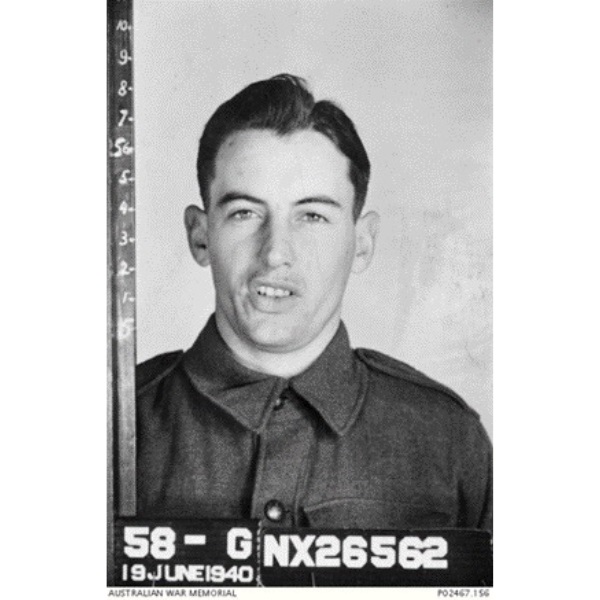This week in the history of Gordon Cricket – 27 August 1945 – Les Holland
Gordon District Cricket Club | August 27, 2024

Author - Paul Stephenson
On 27 August 1945, the last of the Allied Prisoners of War who had been marched from their camp in Sandakan to the village of Ranau were brutally murdered by their Japanese captors. This day saw the tragic end to the story of how the POW's at Sandakan, including Gordon cricketer Les Holland, experienced continual privation, hard labour, brutality, appalling living conditions and death.
Leslie Urban Holland moved from Bathurst as a sixteen-year-old in 1934 and lived at 147 Ashley Street, Chatswood. He was the son of Ambrose and Elizabeth Holland. Les was a keen cricketer at school and was looking to develop his skills in the Sydney Grade cricket competition with Gordon.
Les played Fourth Grade (also known at that time as the Colts XI team) for Gordon for 6 seasons from the 1934-35 season till the 1939-40 season, scoring 1,490 runs with a high score of 88. The Colts XI won two consecutive A Grade Premierships in the Willoughby Ku-ring-gai Cricket Association competitions in the 1936-37 and 1937-38 seasons. Les scored 348 runs and a top score of 69 in the 1936-37 season. The Colts team was captained during those seasons by Gordon legend Charlie Harris.
The Gordon Annual Report described his 1937-38 season as follows:
Les Holland was third with 406 runs at an average of 25.37. Holland was one of the opening batsmen and often caused consternation amongst the opposition bowlers by the way he treated them with disdain, occasionally hitting a sixer off a good length ball. He also kept wickets for the side with success and secured the trophy for the best performance in that department, presented by the Willoughby-Kuring-Gai Cricket Association. (Committee, 1938)
Les would have been impressed to watch the legendary Bert Oldfield at Chatswood Oval captaining the Gordon First Grade team for two seasons before retiring at age 45 at the end of the 1939-40 season.
The war, however, would change all thoughts of cricket when he left his position as an insurance claims clerk in Paddington to enlist in the 2/18th Battalion as a private in June 1940. After completing his training, with the threat of an impending war with Japan, Les was sent to Singapore and arrived in February 1941.
One year later in early February 1942, Les found himself in the middle of the rearguard action to defend Singapore which eventually failed on 8 February, and on 15 February 1942, Les was taken as a prisoner of war along with most of his battalion.
Les Holland’s first encounter with the Japanese commanders as a POW was a very difficult one. After fighting so hard to attempt to hold Singapore from falling with the other Australian battalions, the 2/18th was ordered to surrender by General Percival. The laying down of arms for Les was a personal matter of lost pride and for each Australian was the ultimate act of submission.
The first morning of their surrender, the 2/18th received a visit from the Japanese who demanded that all Bren-gun carrier drivers step forward. Aware that the Bren gunners had inflicted heavy casualties on the enemy, Les would have watched in trepidation as his fellow soldier Mick Simmons and five others obeyed the order and stepped forward. This act of bravery by the 2/18th Bren gunners would have been carried out to avoid any further action which might be contemplated by the Japanese commanders. It was later reported that the six were taken away and either beheaded or used as bayonet practice.
After initially spending a year in a POW camp in Changi, Les was transferred with 500 Australian soldiers in April 1943 to join 1,500 other Australians to a POW camp in Sandakan for the purpose of building a military airfield for the Japanese.
This was the start of absolute hell for Les and his fellow prisoners who were subjected to the most inhumane treatment ever experienced in the theatres of war by a Japanese force intent only on a complete degradation of the lives of the prisoners. This would result in their eventual death by starvation, disease, the impact of their injuries from constant beating or murder by gunshot or bayonet. After they were forced to work on building an air strip at Sandakan they would be often left to starve in small ‘dog cages’ in severe pain from untreated wounds and fevers from various diseases.
How Les survived this treatment will only be every known by Les himself. Was it simply his desire to return to his home in Chatswood to enjoy his comfortable life of being a Gordon cricketer and a member of a free society that respected the values of life, or simply that he wouldn’t be beaten by this terrible scourge.
In May 1945 with impending news of a Japanese surrender, the Sandakan camp commander, Captain Takakuwa Takuo, ordered the prisoners to march towards Ranau in groups of about fifty with accompanying Japanese guards. They needed to destroy what evidence they could of the Sandakan Camp.
Local farmers buried the Australian soldiers where they fell
These journeys from Sandakan to Ranau became known as the ‘Death Marches’ and Les was one of 536 prisoners who undertook the second of three marches. When they arrived at the Ranau camp some weeks later their total number had been reduced to 189. As each prisoner fell from exhaustion on the track during the march a following group of Japanese soldiers would murder them.
After arrival at Ranua, the POW’s were further brutalised amid conditions of degradation rarely equalled. Sick and starving men were made to carry rice bags between a nearby village and Ranau until they dropped. Those attempting to escape were beaten unmercifully before dying or being killed. Les’s condition was extremely poor on arrival at the camp and he died on 6 July 1945 at Ranau.
By August 27, only 15 men were alive and when news came of the imminent end to the war they were shot by their Japanese guards. Les had made it to ‘The Last Camp,’ but there would be no more opening the batting and hitting sixes off good length balls, catching or stumping his opposition behind the stumps. Like many other cricketers who left our shores during both the First and Second World Wars, he had made the supreme sacrifice to enable our way of life to continue and flourish.
While Les Holland’s war record states that he died of malaria, it became known soon after the war that the Japanese described most deaths as malaria to try and hide their inhumane treatment. Les had played his longest innings from 4 February 1941 to 6 July 1945.
It is hard to comprehend the extent of man's inhumanity to man.








